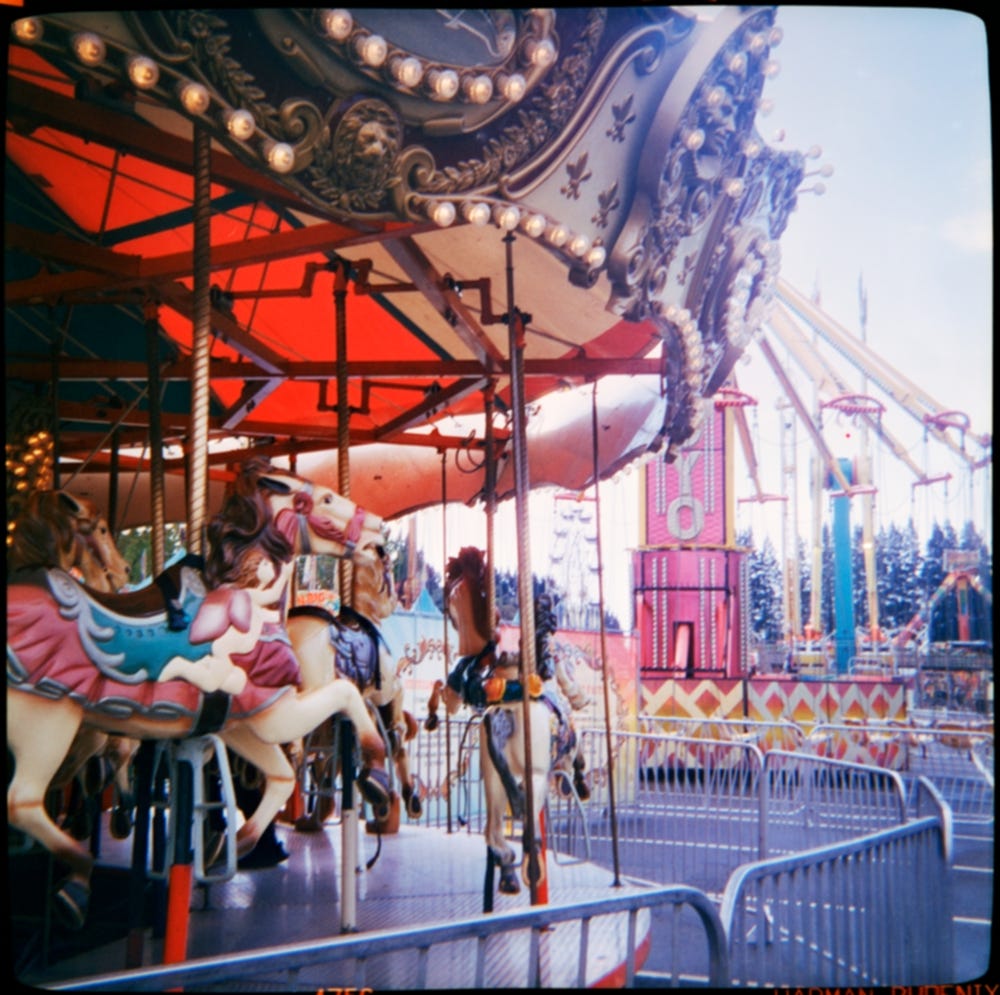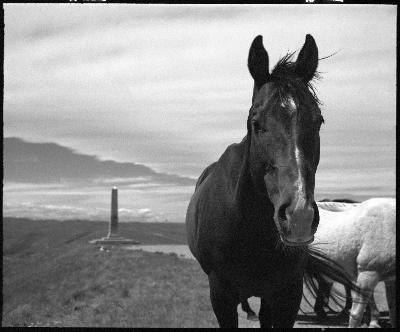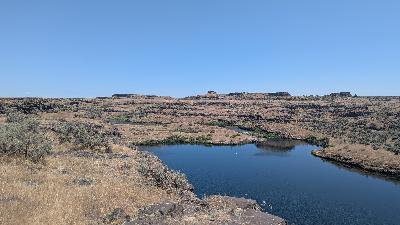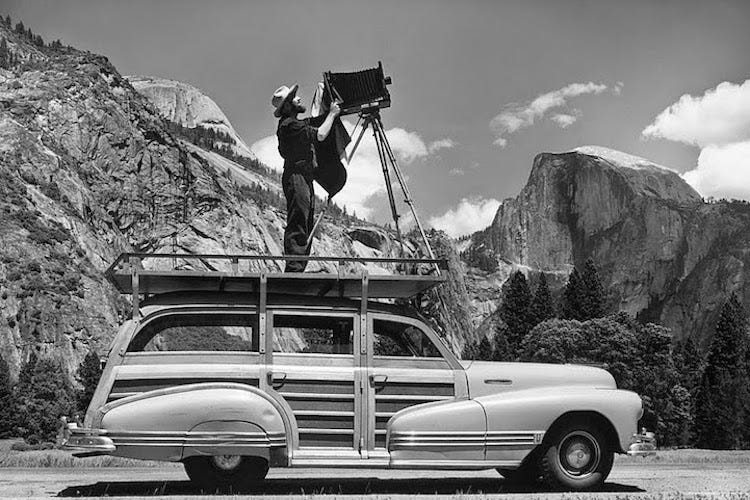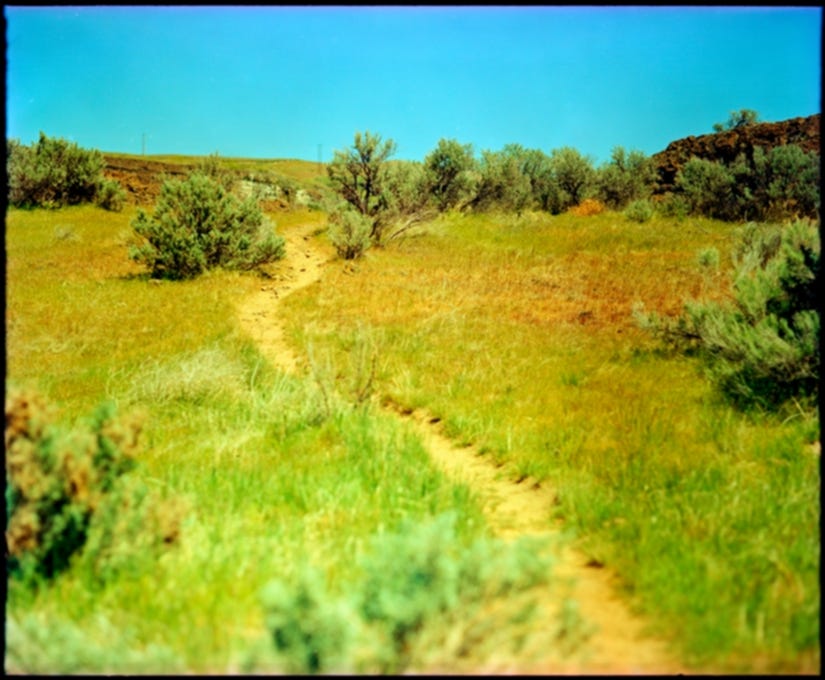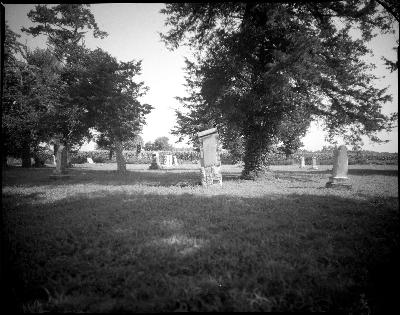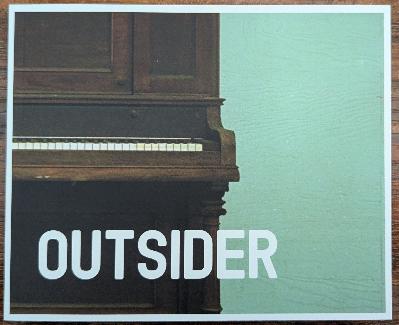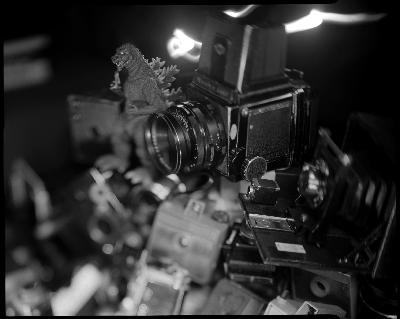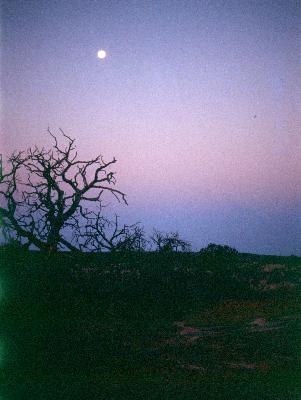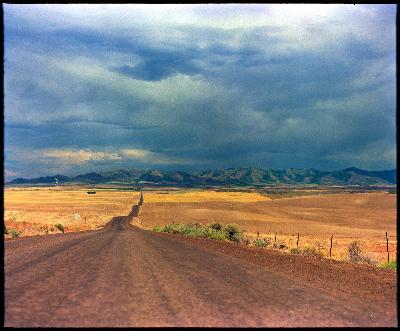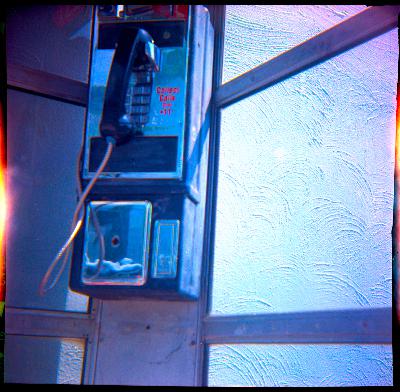The Importance of Solitude (And the Postal Service)
Description
Last week I told you a story, I told you about my first hike of the season, I told you about solitude and how important a role it plays in where I travel, where I photograph. Last week I told you all about it, I told you almost everything. It was, however, a lie of omission.
“I scrambled up some natural steps,” I told you, “between sagebrush and giant boulders left stranded.” Before taking in the Columbia River still hundreds of feet below, I took out my phone, recorded a video, and posted it to Instagram.
I told you about walking the ranch road, which “made for a feeling like I was walking in history” without telling you that I took out my phone and recorded another video, posting it again to Instagram.
The same was true for the balsamroot flowers, as it was true for the walkway on the basalt cliff. The same was true for the bus, except I took two videos.
The ravens, however, I kept for myself. They were my solitude amongst the imagined solitude and a miraculous 5G connection.
I made some glancing reference to all of this. “All along the hike,” I confessed, “I had been taking quick videos with my phone and posting them as stories on Instagram. I thought that I wasn’t going to do this,” I told you, “and was a little unhappy with myself after the first few, finally giving in and sharing the whole day.”
This is maybe the only fully true thing I wrote. But even this is understated. Even this seems like some throwaway line, lip service paid to some vague concept of the rugged outdoors I claim to seek. Solitude doesn’t work like that. Solitude isn’t just isolation. Solitude isn’t a place. It’s not where you go to get away from it all. Solitude is expansive and expanding, it is terrifying and fleeting. Solitude is a life. It’s thousands of days, hundreds of years, centuries all wrapped up in that moment you realize you are alone, that there is nothing that will touch you.
It is not the canyons, the desert, the solo camping trips. It’s not the hours or road miles before you, after you. It’s not even being alone, it’s not even lonesomeness. It is something you carry inside of you. Something concealed, something necessarily and only yours. Solitude is you. It is the very essence of who we are. It is not family or friends or community, but our solitude affects all of those. When we ignore it or get lost within it, our solitude affects those we love. When we embrace it, love it, trust in it, trust in ourselves, then we can offer our true selves to our loved ones.
The walk I took last week was not solitude, and not just because I had a data connection or because I talked to a few people. It was not solitude because every chance I had at solitude was cast aside by an Instagram video. I wanted solitude, but more than that, I wanted to reach out, to tell my friends and the people of my community, “hey, look at what I’m doing right now!”
I wasn’t content to spend time with myself, to get to know who I was that day. That connection I sought is a connection I have almost constantly. I didn’t really want to share my day as much as I wanted to ignore myself. And while connection and community are essential to life, so is solitude, so is connecting and communing with yourself.
In that way, the time away was a failure. And I needed some redemption, I craved that isolation, that chance for solitude.
An Explanation
And so, this past weekend, I tried again. It wouldn’t be a hike this time, I’m still not sure I’m up for that. It would be a drive. But I think I owe you an explanation as to what that means.
My drives are well-planned. I select lonesome dirt roads leading from stop to stop, photographing anything that catches my eye. I visit small towns, but even then, I keep to the side streets, the alleys, and secondary roads leading in and out. I’m not quite slinking or skulking, but I avoid the highways and asphalt as much as I can.
When I stop to photograph along the way, I take my time. In a way, it’s a meditation, a relationship is built or continued, as was the case last weekend.
I have driven almost every public road in Douglas County, Washington, from the highways to jeep roads that faintly trace their way across the sage and hills. This trip was a return, a rekindling. The locations I selected were mostly from memory, and I tried to approach them in new ways, both physically and mentally.
The landscape changes slowly out there, but it does change, and with photography, we have a record of that change. Our photography is the thought and the words of that conversation.
Cloudless
I was packed – two cameras, a few lenses, over a dozen rolls of film, and far more sheets than I would use. I had my tent, my sleeping bag, food, and a feeling that my solitude could come into play at least to some degree.
There was one large caveat, however. The skies would be cloudless. Normally, this would be enough for me to postpone a trip. Clouds are often essential to what I shoot. They frame my subjects, they are dark halos over once-loved homes, they are the heavens rendered reachable, touchable. Without clouds, there is nothing above. There is void. But there might also be solitude. And it was at this I decided to make the trip anyway.
I took my phone, of course. My offline maps were loaded on it, and it’s an essential tool for what I do. But I was going dark, not quite off-grid – I could still be reached (and reach out) if necessary.
My photography wanderings are quite an undertaking, with multiple trips from the house to the car, loading it with camera gear and packs. As I was lugging my 4x5 kit down the stairs to the car, I realized this. So much prep and effort are packed into a three day, two night excursion. It’s understandable why it’s so rare. But I don’t understand why I hardly leave the house otherwise.
Home
Apart from work, I am homebound. It used to be different. I used to go to the movies a few times a week. I used to photograph Seattle, taking on huge photography projects, which led me to explore the less-traveled parts of town. I once walked over five miles a day just wandering down various streets and paths through the city. But now, even with the beautiful spring, here I am inside.
To add to this, I used to publish a zine every month or so. I used to have a podcast with a world built around a growing community. I’d receive dozens of messages each day from listeners, friends, people asking questions, and others answering mine. I was online and connected about as much as I am now, but that connection seems lost or that it’s moved along.
I feel like I’ve been infected with a short attention span. Where once I was able to watch movies, even at home, with little care about what’s happening on my phone, I find myself wandering through uncountable YouTube videos and for no good reason.
Even on May the 4th, Star Wars Day. I wanted to watch something adjacent and picked Akira Kurosawa’s Hidden Fortress and The Bogart & Bacall film The Big Sleep as interesting takes on A New Hope and Empire Strikes Back. But I didn’t. Instead, I just flipped through YouTube like I flipped through channels as a bored kid.
The movies and local photowalks take almost no planning or commitment at all, while my days-long trips take foresight and a level of preparedness that would keep most people from doing them. I don’t understand why I can hardly leave the house or focus unless it’s some big production. I don’t have answers here. It’s not that sort of thing.
Letters and Numbers
Most of the roads through Douglas County are laid out in a grid, each road exactly a mile away from the next, each road numbered or lettered accordingly. When I plan, I look for roads that break that pattern. They are placed where the land would not relent to an unnatural straight line. This was not even a compromise, we stood no chance, we gave in to the contours of the land.
There is a road which peels itself off from Road E Northwest called Road 13 Northwest. Because of the land, this road is mostly diagonal, curving along a sagebrush-covered ridge. Here, it is hardly more than a two-track.
In the spring, wildflowers grow in abundance along this road. Mostly it’s the balsamroot flowers, but also rock buckwheat, phlox, and buttercup. There are yellows and purples and whites mixed amongst the brown grasses and light sage.
In one particular spot, a large basalt boulder was planted, and with the cloudless blue skies and colorful ground, I stopped and spent an hour. Not a single car or truck passed by. It was me and my 4x5. I used strange and expired color film. This is duplication film, never meant to be exposed inside a camera. I knew it would draw out the colors, saturate the scene, bring every color to its most intense. It would look the way it felt.
As I walked the small prairie, placing my tripod among the flowers, I missed the clouds. I knew I would. The clouds add a dynamic to our static scenes in the same way wind might. I love to force long exposures, capturing the wind on my photos – the flowers swaying, the leaves a blur, the clouds smeared across the sky. And here there was nothing. Not a cloud above from one wide horizon to the other.
I missed them, but was resigned. It was what it was, and there was little I could do but capture this cloudless day.
Botheration
But to what end? It’s not that I suffer from impostor syndrome – the idea that someone will finally catch on to the truth that you have no idea what you’re doing and hold no qualifications at all to do it. I know where I stand as a photographer and am fine with whatever my abilities are.
My issue is that I can’t convince myself that anyone cares, and also, why should they? It’s not th



